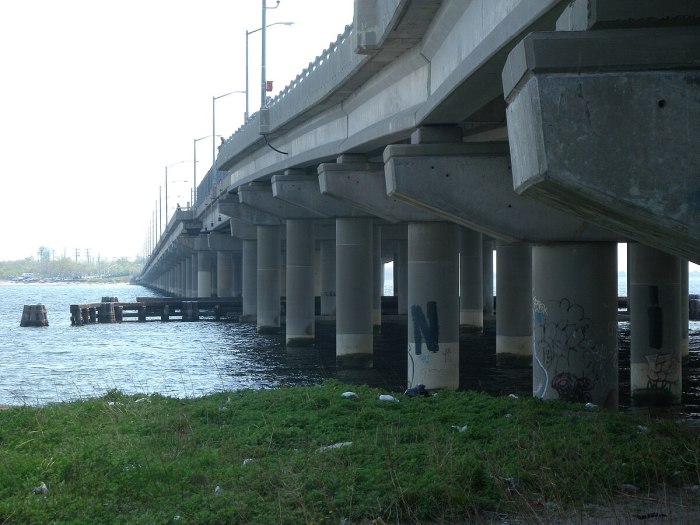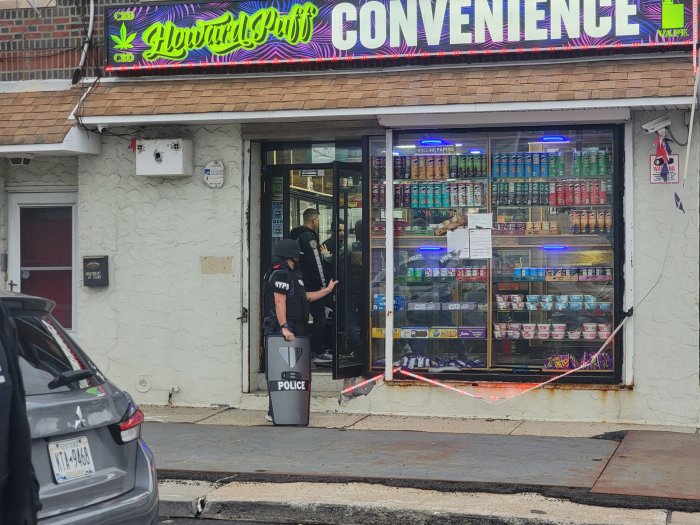A senior housing development currently under construction needs more funding to fix its failing façade.
Senator Joseph Addabbo and Assemblymember Phil Goldfeder recently sent a letter to Governor Andrew Cuomo asking him for an additional $500,000 from the Port Authority’s Regional Funds Account to repair the Senior Housing Development in Howard Beach.
The project, which is being developed by Catholic Charities Progress of Peoples Development Corporation (CCPOP), the affordable housing development division of Catholic Charities Brooklyn and Queens (CCBQ), has received millions in funding and grants, but the cost to fix the façade and rooftop parapet are much higher than originally anticipated.
“There was a lot of façade work that was done improperly in the original construction and they didn’t use the proper ties to place the brick structure,” said Monsignor Alfred LoPinto, Vicar for Human Services for CCBQ. “This is such an important project and at this point we’re just hoping to ensure that the building we developed will be secure and water tight, so we do not run into problems in the future that will be much more costly.”
“Thanks to Monsignor LoPinto and the great team at Catholic Charities the budget for this project has been stretched thin but unexpected damage to the facade needs to be corrected immediately in order to ensure quality senior housing,” said Goldfeder.
Located at 155-55 Cross Bay Boulevard, construction on the housing development began this January and is expected to finish at the end of 2014.
The structure was built in the 1960s as a hospital. Later it was used as the Bernard Fineson Developmental Disabilities Senior Office and in the 1980s a one-story addition was constructed, making it four stories.
According to the CCBQ, the renovated building will feature easy access for seniors, beautified grounds, a community room and several green elements in the apartments, including Energy Star air conditioning units and appliances.
At least 80 percent of the 96 units will be studio or one-bedroom apartments for low-to-moderate income senior citizens over the age of 60. The remaining units will be one-to-two bedroom apartments reserved for individuals supported by the New York State Office of Mental Retardation and Developmental Disabilities. Fifty percent of the senior apartments are earmarked for Community Board 10 residents, according to the board’s chair Elizabeth Braton.
“Additional funding is desirable because the building is going to serve a population that needs to be served,” she said. “I applaud this request.”
It’s natural that issues like the façade damage are going to pop up when working on an older building, Braton added, and if additional money is needed, then the state should certainly play a role, she said.
In December 2011 CCBQ secured $31 million in funding with a construction loan from JPMorgan Chase and federal and state low-income housing tax credit equity purchased by Morgan Stanley through syndicator Hudson Housing Capital.
Additionally, CCBQ received about $11 million in grant awards from the Housing Trust Fund Corporation, New York State Housing Finance Agency, City Housing Preservation and Development Agency, City Capital Funding, Federal Home Loan Bank of New York and a HOME block grant, as well as $3.5 million in discretionary funding from City Council Speaker Christine Quinn, Borough President Helen Marshall and Councilmember Eric Ulrich.
When Governor David Paterson was in office, local elected officials sent him a letter requesting funds for soundproofing the building against nearby JFK airplane noise. But a decision about the request wasn’t reached before Paterson left office. The money is still available.
If granted, the $500,000 would go towards covering the façade repairs and soundproofing, said Goldfeder. He anticipates that they will need to request more money, possibly from other places, to help cover the project’s construction because of more unexpected costs.


































